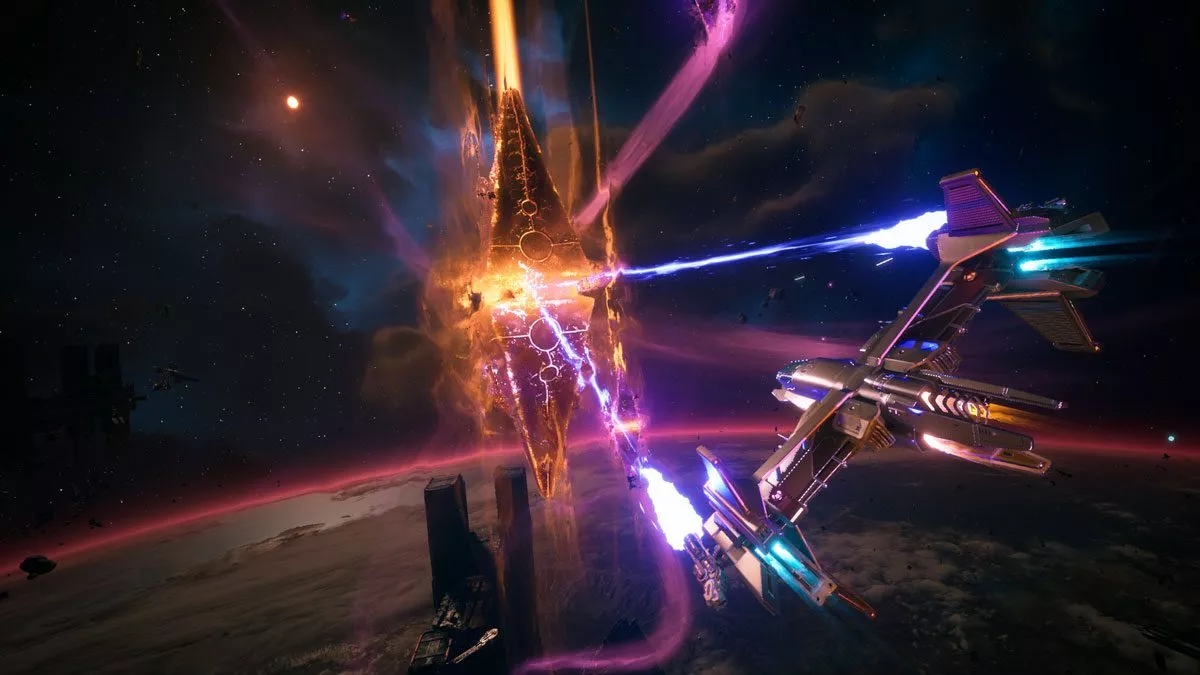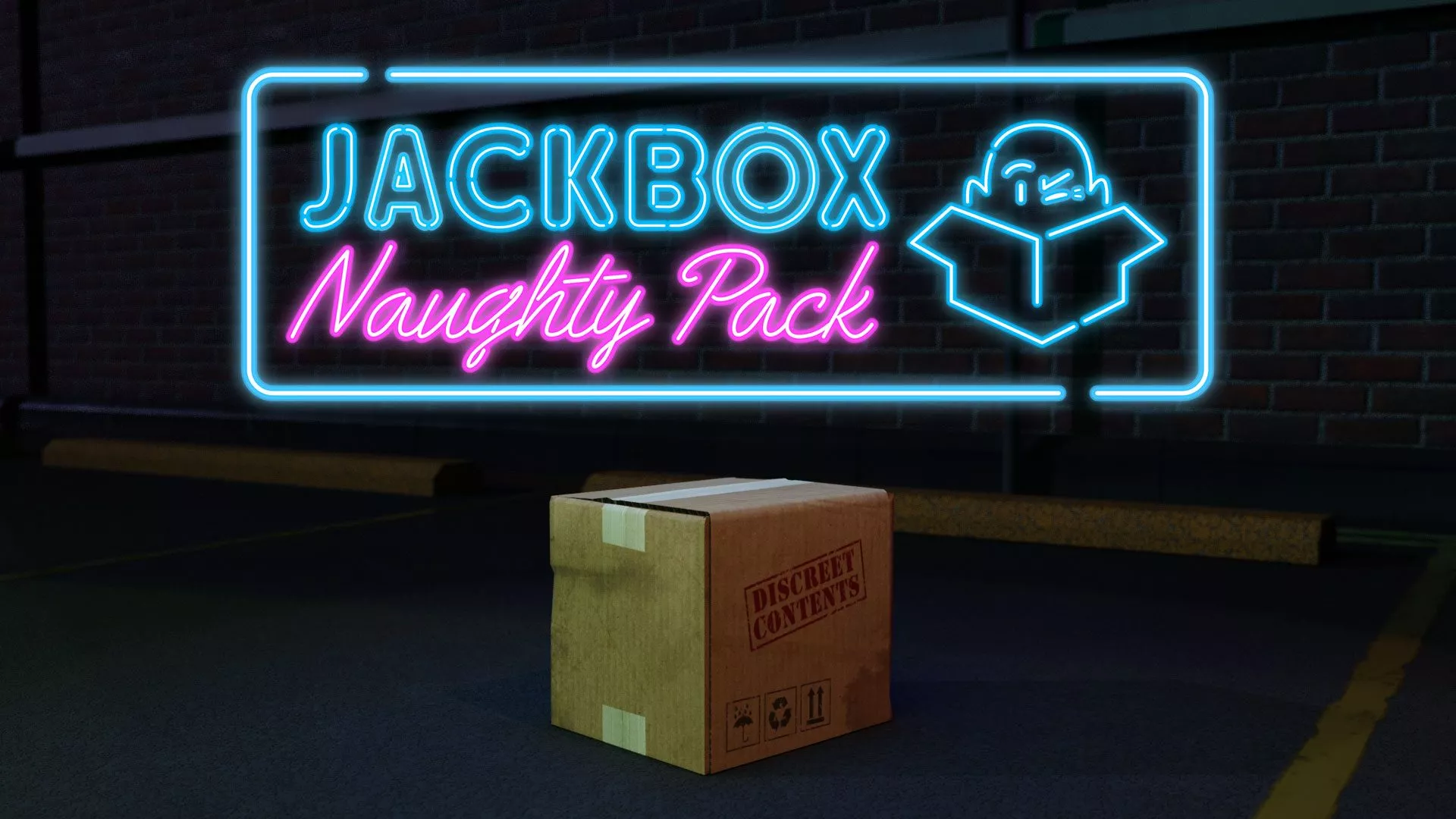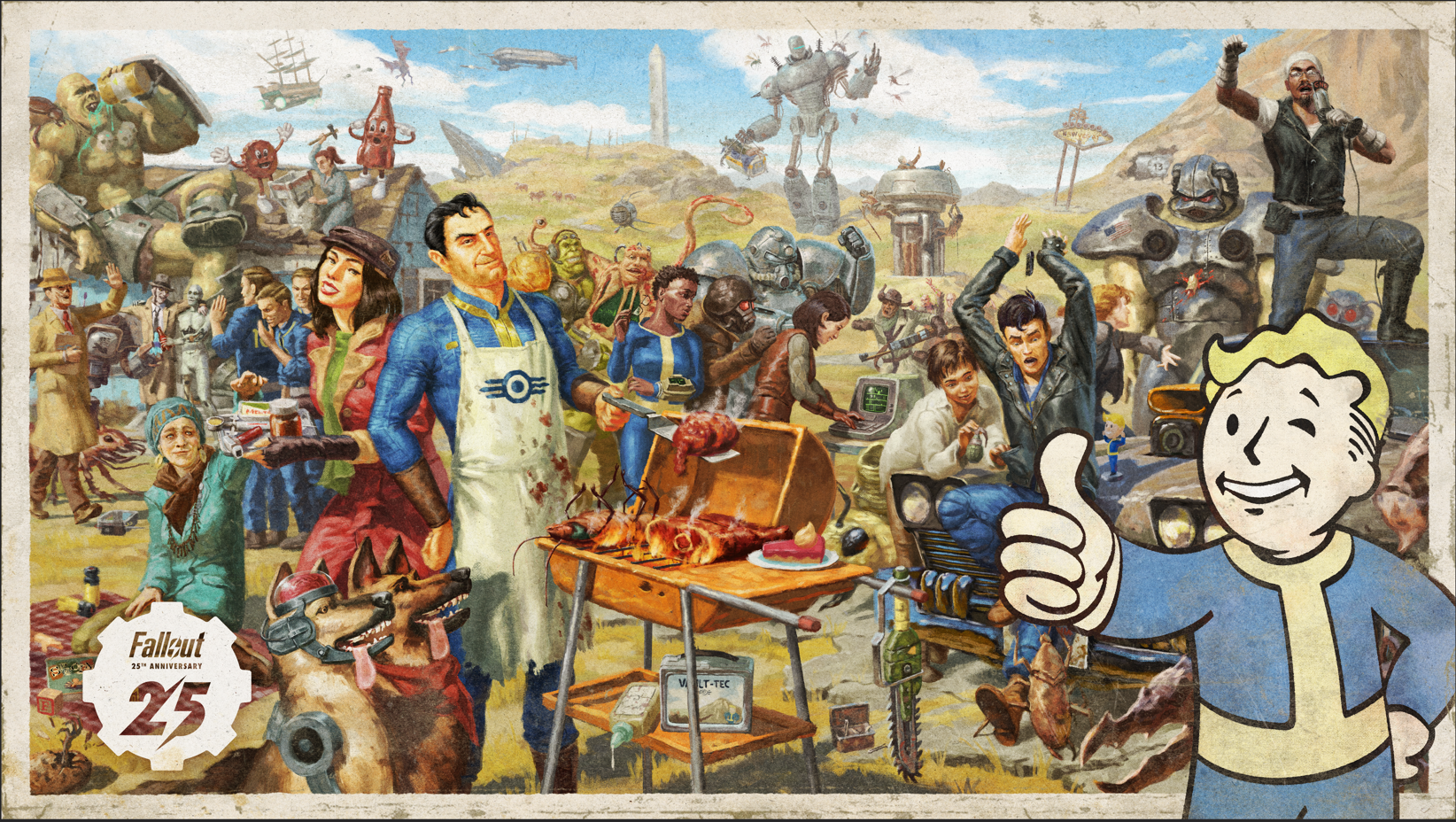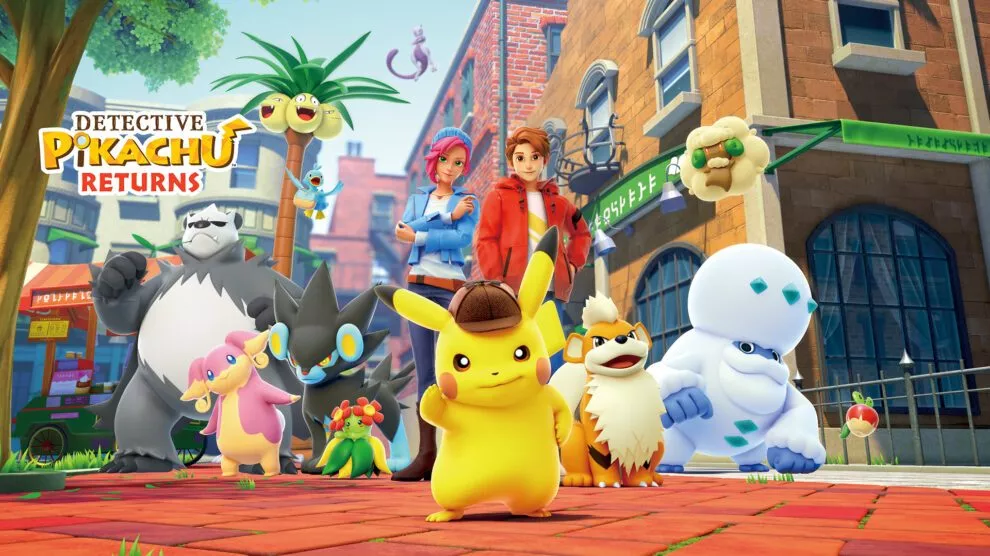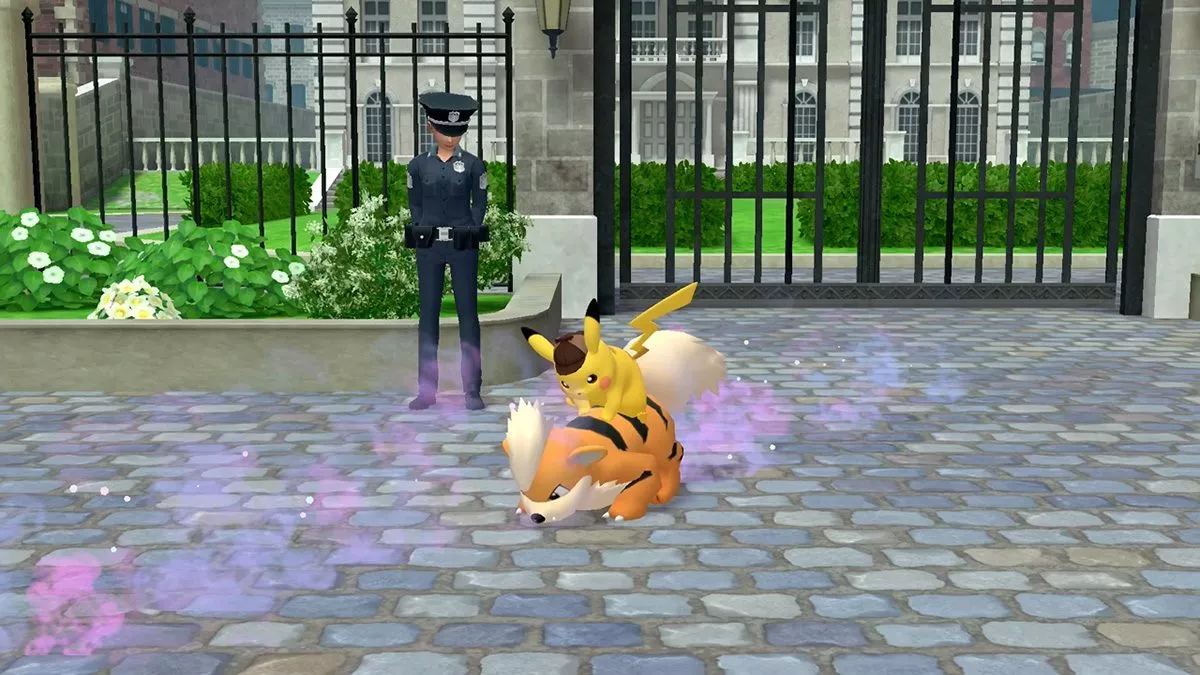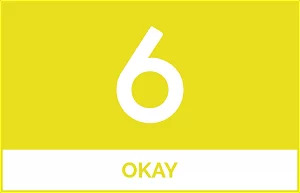Solving for Pikachu.
The Pokémon franchise is so large, there’s a game for literally everything. From Picross to painting to just plain ol’ Pokédex completion, everything has had Pikachu and friends in it – though of them all, one of the most loved by fans is 2018’s Detective Pikachu, a 3DS game so beloved it spawned an honest-to-goodness live-action Pokémon movie.
The game presented an all-new way to interact with the world of Pokémon, seeing them as something more than collectibles or combatants – instead, why can’t they be criminals?
Enter Detective Pikachu Returns, a direct sequel to the 3DS’ Detective Pikachu. Picking up where the first game left off, Returns once again focuses on the pair of Tim Goodman – the most default white boy in the world – and the titular Detective. In short order, the intro summarises the complete events of the first game; Tim and Pikachu’s efforts to track down and stop the distribution of “R”, a drug that drives Pokémon into a rage, as well as finding Tim’s missing father Harry Goodman, who works as a detective in Ryme City.
These beats may sound familiar to anyone who saw the 2019 Detective Pikachu film, but in an interesting twist Tim never found his dad in the course of the first game. Returns even makes a point early on of poking fun at this, with one character noting that Tim’s adventures were turned into a film that “kind of did its own thing”, making it clear that things won’t necessarily go in the same direction. Final season of Game of Thrones, anyone?
Shortly after being recognised for their past adventures with an award from the city, Tim and Pikachu get wrapped up in a new mystery surrounding the Aurora Drop, the most famous jewel in Ryme City. As you’d expect in a detective mystery, not all is as it seems – and the search for the Aurora Drop soon leads to new clues about Harry’s fate.
Ryme City is gorgeous to move around in – given that each area is fairly contained, the level of detail is able to soar on the Switch. Pokémon are detailed and animated, and can be found everywhere in the city. You’ll often see them going about their business, flying by in the background or interacting with their Trainers.
It gives a sense of life to the city, and is the kind of Pokémon-filled environment that Pokémon Scarlet and Pokémon Violet were aiming for. Granted it’s on a much smaller scale here, but it just works better. Human characters do live in a bit of an uncanny valley, not quite anime-styled but not quite something else either – but the cast of characters is diverse in age, gender and cultural background which is always lovely to see.
Detective Pikachu Returns sees you moving about Ryme City to find clues and question witnesses for your cases – both human and Pokémon. Through the strange bond that lets them understand one another, Tim and Pikachu are able to team up and interact with all of Ryme City’s inhabitants, to find clues and information even the city’s police department can’t access. While interviews with Ryme City’s human inhabitants are fairly straightforward, focusing on separating truth and lies, Pokémon interviews are trickier; a bug Pokémon isn’t going to pay attention to much beyond flowers and sunshine, so their testimony may not get you far.
While some Pokémon may have the critical information needed to solve a case, that’s not admissible evidence in the Poké-legal system, so you’ll need to hunt down corroborating evidence to support your conclusion. It’s an interesting twist, knowing you have the answer to the case but need to find acceptable support before being able to close the case. Moving around the city you’ll also uncover smaller mysteries, referred to as Concerns. These could be anything from finding lost Pokémon, to helping get a team together for soccer practice. Concerns can be completed as you move around for the main case, and add a little extra life to the city as well.
While this may all sound complex, in practice the game is fairly straightforward. For the most part, you’re just travelling from A to B to A to C, slowly checking off the right interactions and interacting with the right evidence until you have enough information to make a deduction in your casebook. While several possible outcomes will come up for you to choose from, you can’t really get it wrong. Selecting an incorrect deduction doesn’t cause any kind of penalty, and just crosses that option off the list before letting you try again. While this is great for younger players, it means that there’s very little mystery involved in the mystery for older gamers.
I would have loved to see the occasional red herring, or at least be able to follow an incorrect conclusion for a few steps before finding out I’m wrong. Unfortunately, the game is really only interested in the single, correct critical path for each case, with very little deviation. There’s really only one way to get to the answer, which is understandable given the younger age bracket but still a little frustrating at times.
As an example, one of the game’s early Concerns has you answering quiz questions to identify specific Pokémon species as the answers, which you need to find around the city. Every time you meet a Pokémon or person for the first time, you’ll get an introduction shot with their name and a brief description of who or what they are. So, having met a Pokémon I knew was the answer before starting the quiz, I assumed I would have the answer loaded and ready – instead I was forced to go back, interact with it again and THEN return with my answer. It’s a small thing, but recognising this interaction had already happened would feel like a win to the player – young OR old – for investigating the world in the way the game wants you to. Instead, it makes the structure of the game feel far more rigid than it needs to.
Despite these grumblings, the game is still a solid experience. Investigations are multi-staged, and some of the reveals are interesting if not particularly surprising. The inclusion of newer-generation Pokémon since the original title makes Ryme City feel even more alive and part of the Pokémon world, and the city is full of small details to really drive home the idea of people and Pokémon living together. While the mysteries aren’t too complex, this is ideal for the target audience of Pokémon-loving kids because everything is geared towards helping you solve the mystery without being discouraged.
The game even has a Story Jump mode, allowing you to move between the game’s different cases at will. If one case doesn’t interest or manages to stump the player, it’s all too easy to jump to a different one and go back to having fun. While you might not find yourself particularly challenged, at least you’ll get to see a Slowpoke in a funny hat!
Detective Pikachu Returns was reviewed using a promotional code on Nintendo Switch, as provided by the publisher. Click here to learn more about Stevivor’s scoring scale.
 |
Detective Pikachu Returns6 October 2023Switch |
This article may contain affiliate links, meaning we could earn a small commission if you click-through and make a purchase. Stevivor is an independent outlet and our journalism is in no way influenced by any advertiser or commercial initiative.


